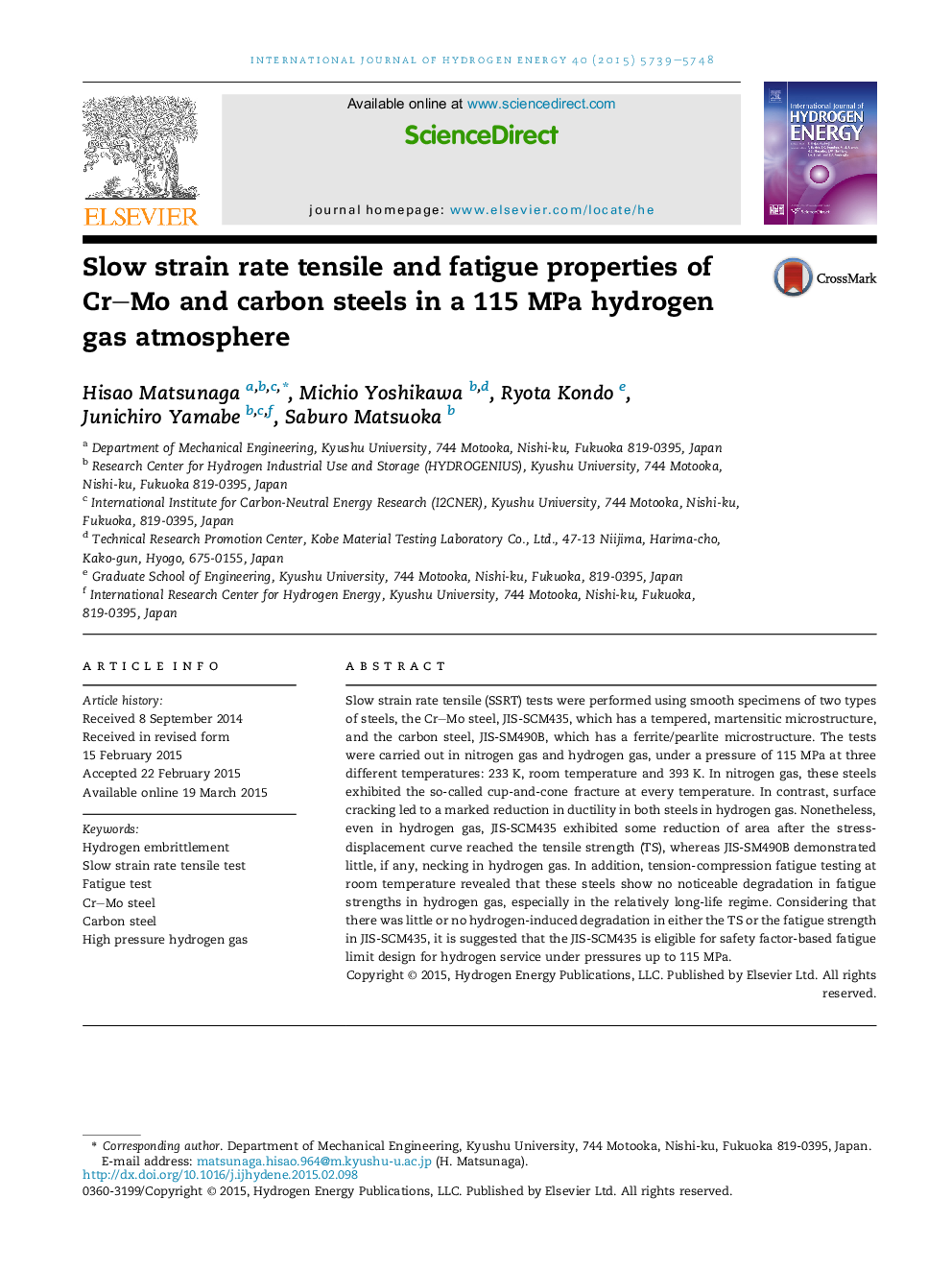| کد مقاله | کد نشریه | سال انتشار | مقاله انگلیسی | نسخه تمام متن |
|---|---|---|---|---|
| 1275629 | 1497457 | 2015 | 10 صفحه PDF | دانلود رایگان |

• Cr–Mo steel JIS-SCM435 and carbon steel JIS-SM490B were investigated.
• SSRT and fatigue tests were conducted in 115 MPa hydrogen gas.
• In both the steels, a ductility loss was observed in hydrogen gas.
• No hydrogen-induced degradation was observed in fatigue strength in long-life regime.
• Requirements for safety factor-based fatigue limit design for hydrogen service were proposed.
Slow strain rate tensile (SSRT) tests were performed using smooth specimens of two types of steels, the Cr–Mo steel, JIS-SCM435, which has a tempered, martensitic microstructure, and the carbon steel, JIS-SM490B, which has a ferrite/pearlite microstructure. The tests were carried out in nitrogen gas and hydrogen gas, under a pressure of 115 MPa at three different temperatures: 233 K, room temperature and 393 K. In nitrogen gas, these steels exhibited the so-called cup-and-cone fracture at every temperature. In contrast, surface cracking led to a marked reduction in ductility in both steels in hydrogen gas. Nonetheless, even in hydrogen gas, JIS-SCM435 exhibited some reduction of area after the stress-displacement curve reached the tensile strength (TS), whereas JIS-SM490B demonstrated little, if any, necking in hydrogen gas. In addition, tension-compression fatigue testing at room temperature revealed that these steels show no noticeable degradation in fatigue strengths in hydrogen gas, especially in the relatively long-life regime. Considering that there was little or no hydrogen-induced degradation in either the TS or the fatigue strength in JIS-SCM435, it is suggested that the JIS-SCM435 is eligible for safety factor-based fatigue limit design for hydrogen service under pressures up to 115 MPa.
Journal: International Journal of Hydrogen Energy - Volume 40, Issue 16, 4 May 2015, Pages 5739–5748